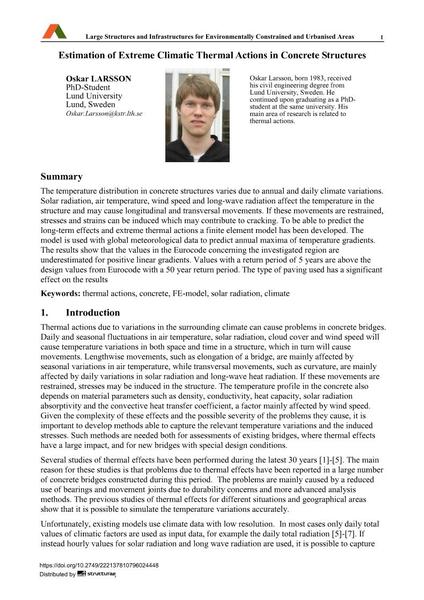Estimation of Extreme Climatic Thermal Actions in Concrete Structures

|
|
|||||||||||
Bibliographic Details
| Author(s): |
Oskar Larsson
|
||||
|---|---|---|---|---|---|
| Medium: | conference paper | ||||
| Language(s): | English | ||||
| Conference: | IABSE Symposium: Large Structures and Infrastructures for Environmentally Constrained and Urbanised Areas, Venice, Italy, 22-24 September 2010 | ||||
| Published in: | IABSE Symposium Venice 2010 | ||||
|
|||||
| Page(s): | 252-253 | ||||
| Total no. of pages: | 8 | ||||
| Year: | 2010 | ||||
| DOI: | 10.2749/222137810796024448 | ||||
| Abstract: |
The temperature distribution in concrete structures varies due to annual and daily climate variations. Solar radiation, air temperature, wind speed and long-wave radiation affect the temperature in the structure and may cause longitudinal and transversal movements. If these movements are restrained, stresses and strains can be induced which may contribute to cracking. To be able to predict the long-term effects and extreme thermal actions a finite element model has been developed. The model is used with global meteorological data to predict annual maxima of temperature gradients. The results show that the values in the Eurocode concerning the investigated region are underestimated for positive linear gradients. Values with a return period of 5 years are above the design values from Eurocode with a 50 year return period. The type of paving used has a significant effect on the results |
||||
| Keywords: |
concrete solar radiation climate FE-model thermal actions
|
||||
